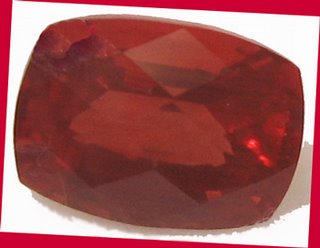I spent a couple of hours this morning trying to understand the difference between red labradorite, andesine and sunstone. I guess I wasn't the only one confused. I found a variety of different opinions and pages of bulletin boards filled with discussion and debate on the topic. The concensus seems to be that the difference between red labradorite and andesine has to do with the relative percentages of calcium and sodium. 50-70% sodium with 50-30% calcium is andesine whereas 50-70% calcium to 50-30% sodium is labradorite. Apparantly there are small differences in the refractive indices and the specific gravities, but the only way to know for sure is to send them to a lab for chemical analysis. Where andesine and labradorite are scientific names, sunstone is more of a trade name. From what I can gather, sunstones usually fall more into the labradorite category. They are all feldspars. So maybe just calling them red feldspar would be simplest. Whatever you call them, they are rare and beautiful gemstones. I hope to have some pictures of some to post in a few days, along with some more information on these facinating stones.



